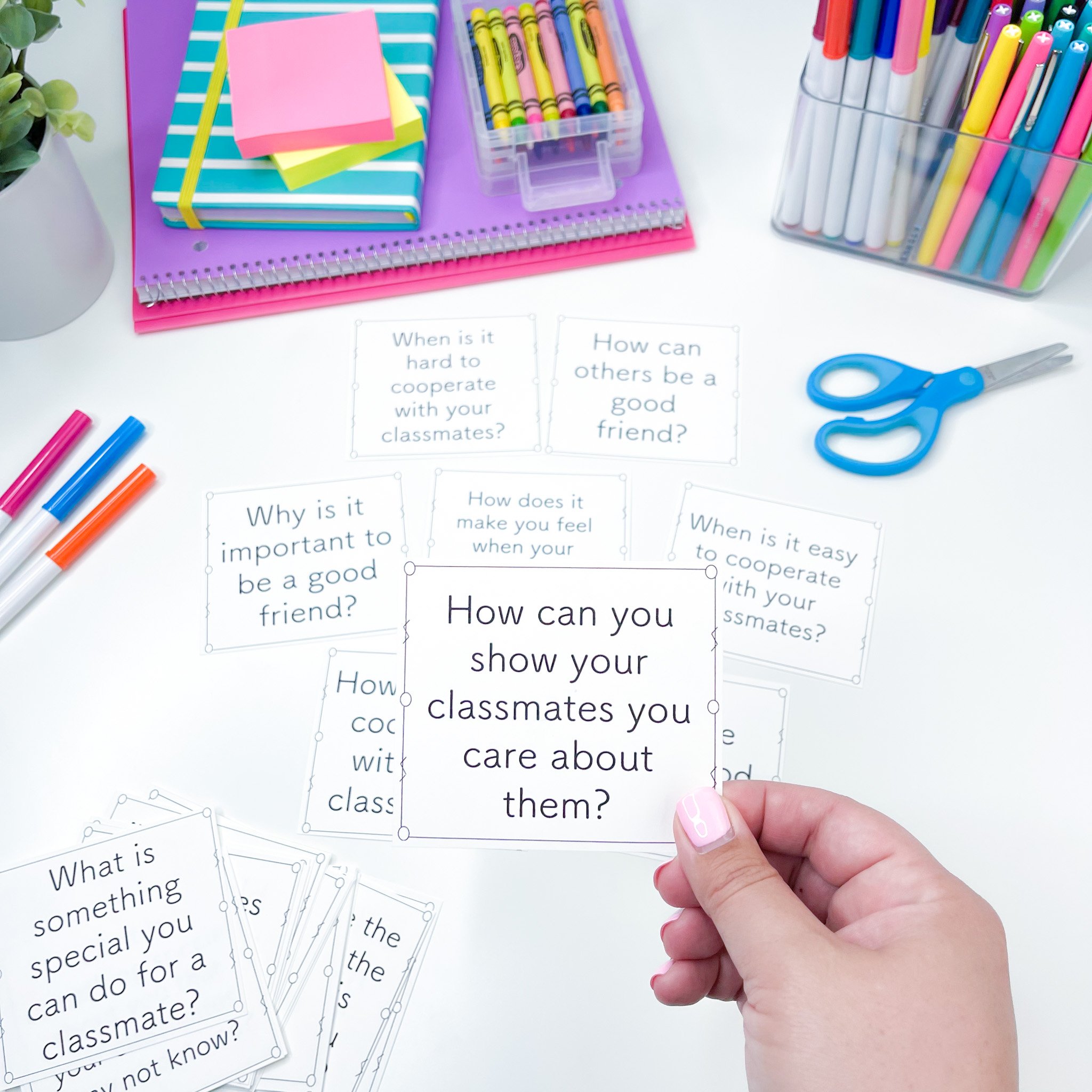Proactive Bullying Prevention Strategies
If you’re reading this in October, it is Bullying Prevention Month! But let’s be real, our students could use bullying prevention support all year long. I usually love to share implicit bullying prevention strategies like in this blog post, but I also want to focus on preventative bullying prevention-adjace topics such as kindness, conflict resolution, friendship, and self-advocacy.
Proactive Bullying Prevention: Create a Culture of Kindness
Creating a culture of kindness is the best way to prevent bullying and general bad behavior from occurring on campus.
Encourage teachers to use morning meeting discussion cards like these to increase empathy and understanding. You can also introduce restorative practices to your school site by using circles to create a safe space and a place to resolve conflicts.
Proactive Bullying Prevention: Conflict Resolution Strategies
Teaching conflict resolution is a great way to prevent bullying. Have students role play how to use I-Statements in a class lesson or lead a conflict resolution group of students who are continuing to struggle in this area.
It's also important to remember that when students are sent to our office to resolve a conflict we focus on the source of the problem and not simply a quick band-aid fix. This will prevent further incidents and potential bullying down the road.
Proactive Bullying Prevention: Friendship Skills
Try teaching friendship skills across each tier by using these methods:
School wide: Create a buddy bench or host a "mix it up at lunch" day to encourage students to reach out to those outside of their friend group.
Class lesson: Teach a friendship guidance lesson to each class.
Small group: Facilitate a friendship small group to help students identify the qualities of a good friend.
Individual: Explicitly teach how to make friends and be a good friend using scripts and role play.
Proactive Bullying Prevention: Teaching Self-Advocacy
Help your students learn self-advocacy skills by trying one of these 3 strategies:
Have students practice advocacy scripts during class lessons, groups, and individual sessions
Create self-esteem affirmations with kiddos so they feel confident to self-advocate
Teach students how to advocate for others too by discussing the difference between bystanders and upstanders (This is a great video to share to explain upstaders!)
Teaching these skills all year long is a proactive way to ensure that bullying behavior is prevented. Which area do you want to focus on?






